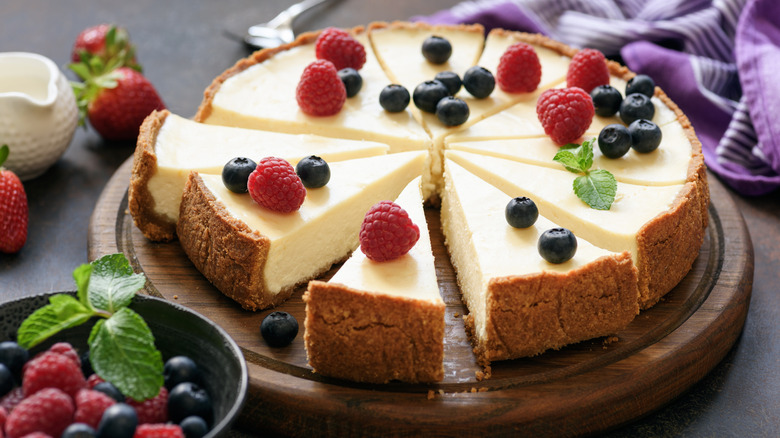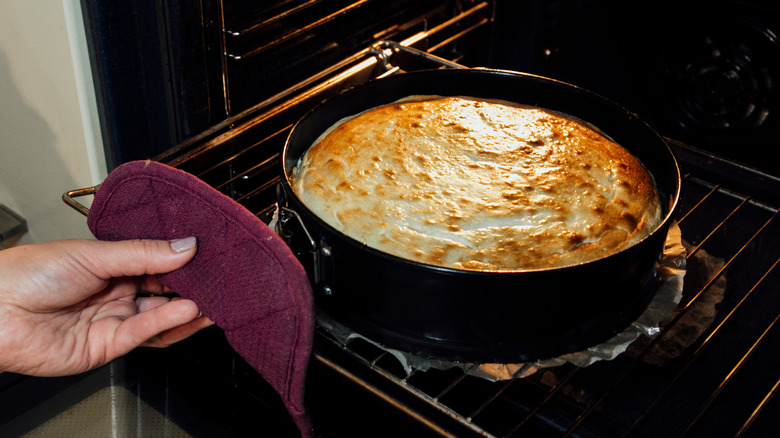The Wobble Test Lets You Know If Cheesecake Is Done Baking
A common perception about baking is that it's very precision-oriented — borderline scientific. Every measurement must be adhered to down to the fraction of an ounce, and one forgotten ingredient could mean the difference between perfection and disaster. Even baking time, temperature, and method are determined for a reason, tuned to be exact for any recipe, ranging from simple cookies to various types of complicated pastries.
Still, differences in ovens can cause unexpected results in even the most detailed of baking instructions, requiring your baking time or oven temperature to differ from the recipe. Despite this potential for unintentional over- or underbaking, there's one test that will never fail you, at least for cheesecake, and all it requires is your eyes. The seemingly imprecise wobble test lets you know when a cheesecake is perfectly baked.
To perform the wobble test, open the oven and firmly tap on the side of the cake pan with a wooden spoon. If you see ripples, your cheesecake is still too liquid in consistency and needs to bake longer. If the entire surface of the cheesecake wobbles uniformly, like a perfectly set Jell-O, it has passed the wobble test and can be removed from the oven. The internal temperature range at this point will be ideal: around 145 to 150 degrees Fahrenheit. The residual heat will continue to cook the cheesecake as it rests, ensuring it reaches an internal temperature of 160 degrees, making the eggs in the mixture safe to eat, according to USDA guidelines.
Why the wobble test is so effective
You might be asking why you would trust the unquantifiable wiggle of cheesecake over something like a baking thermometer. A precise temperature reading from the center of the cake will indeed indicate when it's done, but doing so could compromise the appearance of your cheesecake. There are many mistakes you can may make when baking cheesecake; creating a hole that lets air escape, leading to surface cracks, is one of them. Of course, if you plan to cover up any blemishes with toppings like fruit and whipped cream, you can use the thermometer method. If you're serving naked cheesecake, though, the wobble test is still the most effective way to determine doneness and preserve aesthetics.
On top of preserving the overall look of your cheesecake, the wobble test also helps you get the perfect texture. There's a fine line between perfectly cooked and overcooked, and every unnecessary minute in the oven makes a difference. Overcooked cheesecake will be dry and grainy instead of silky and smooth, which nobody wants to serve their diners. If you're not 100% certain of your oven's temperature calibration, as a general rule of thumb, you can start performing wobble tests up to 10 minutes before a recipe's minimum recommended cooking time. So, if your recipe says 45 minutes, check it at 35 and see where it's at. If it's not done, be vigilant and continue checking again every couple of minutes until you see the perfect wobble.

